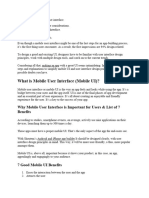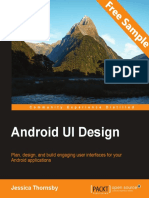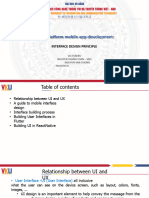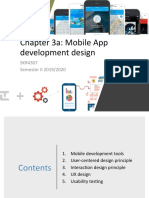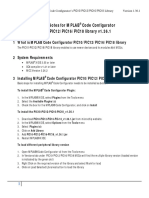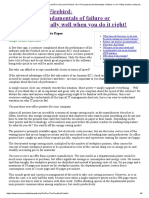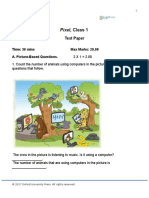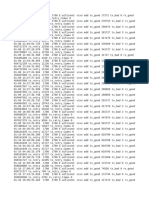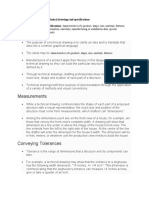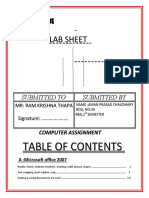0% found this document useful (0 votes)
53 views24 pagesDifferences Between IOS & Android
The document compares the user interface design differences between iOS and Android. It discusses the different platform guidelines, screen sizes, units of measurement, navigation patterns, use of floating action buttons, system fonts, and flat design versus material design elevation.
Uploaded by
aya.amre140Copyright
© © All Rights Reserved
We take content rights seriously. If you suspect this is your content, claim it here.
Available Formats
Download as PDF, TXT or read online on Scribd
0% found this document useful (0 votes)
53 views24 pagesDifferences Between IOS & Android
The document compares the user interface design differences between iOS and Android. It discusses the different platform guidelines, screen sizes, units of measurement, navigation patterns, use of floating action buttons, system fonts, and flat design versus material design elevation.
Uploaded by
aya.amre140Copyright
© © All Rights Reserved
We take content rights seriously. If you suspect this is your content, claim it here.
Available Formats
Download as PDF, TXT or read online on Scribd
/ 24



















